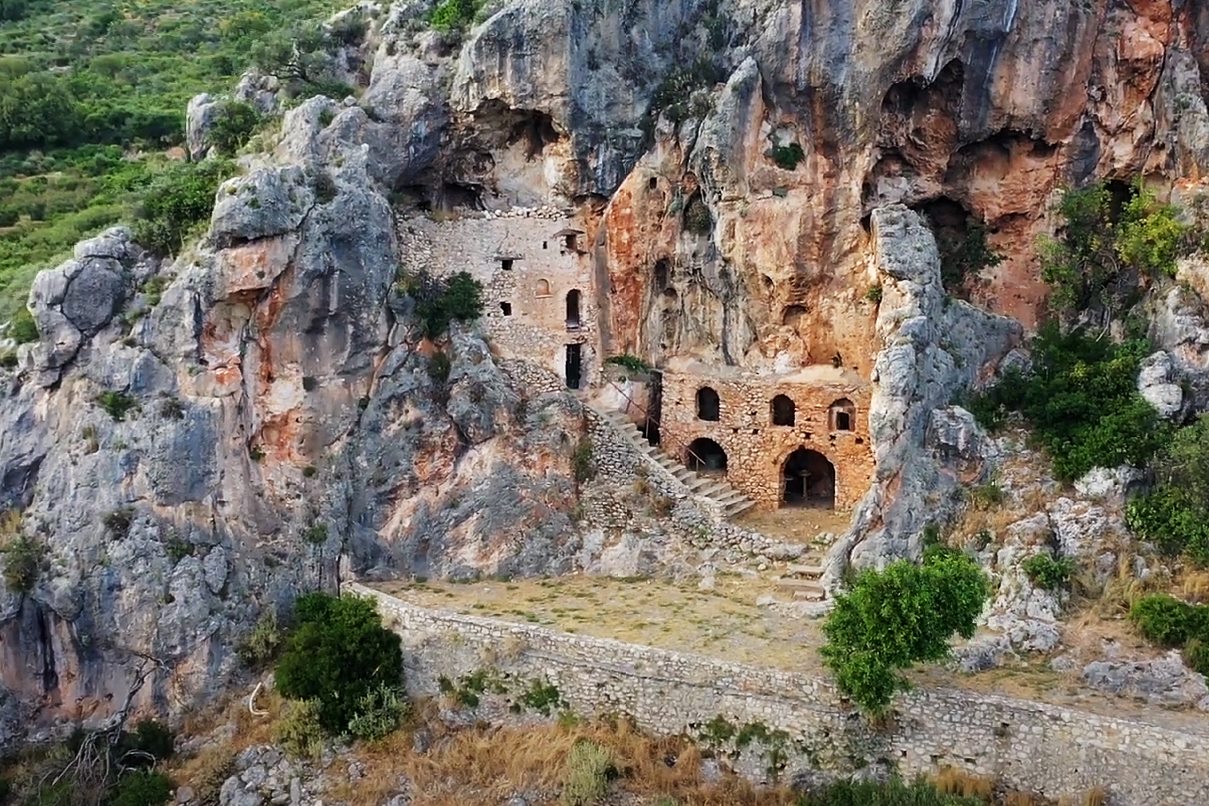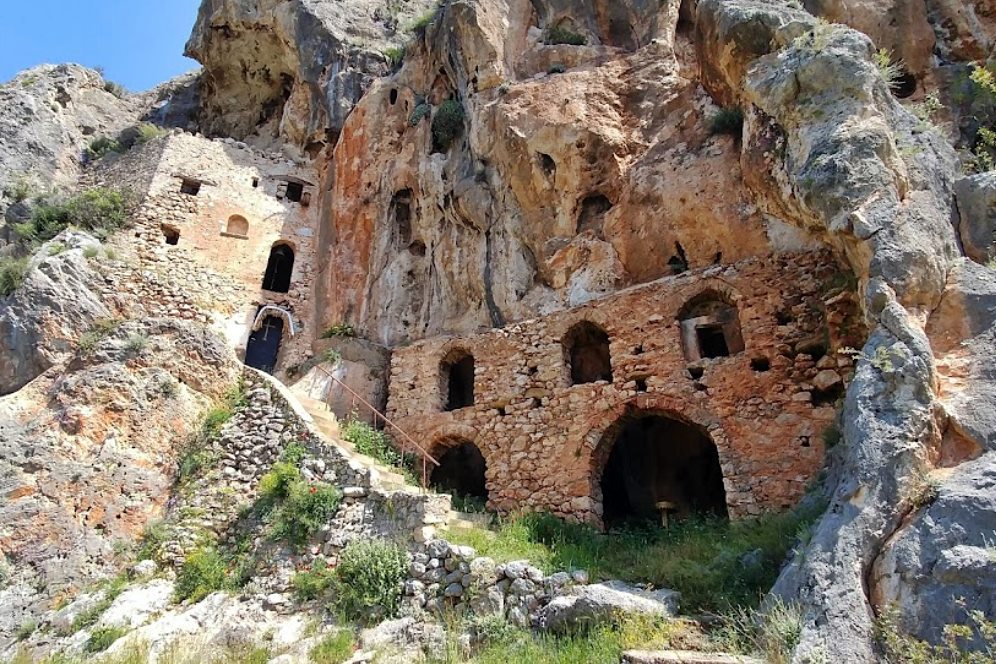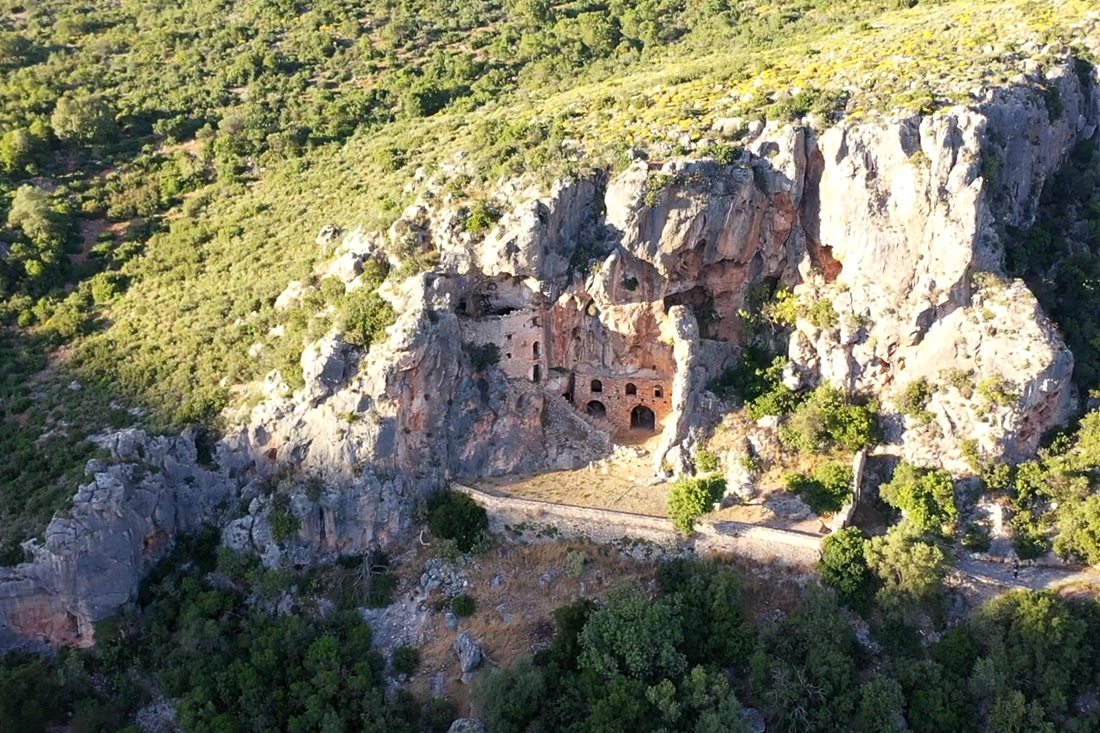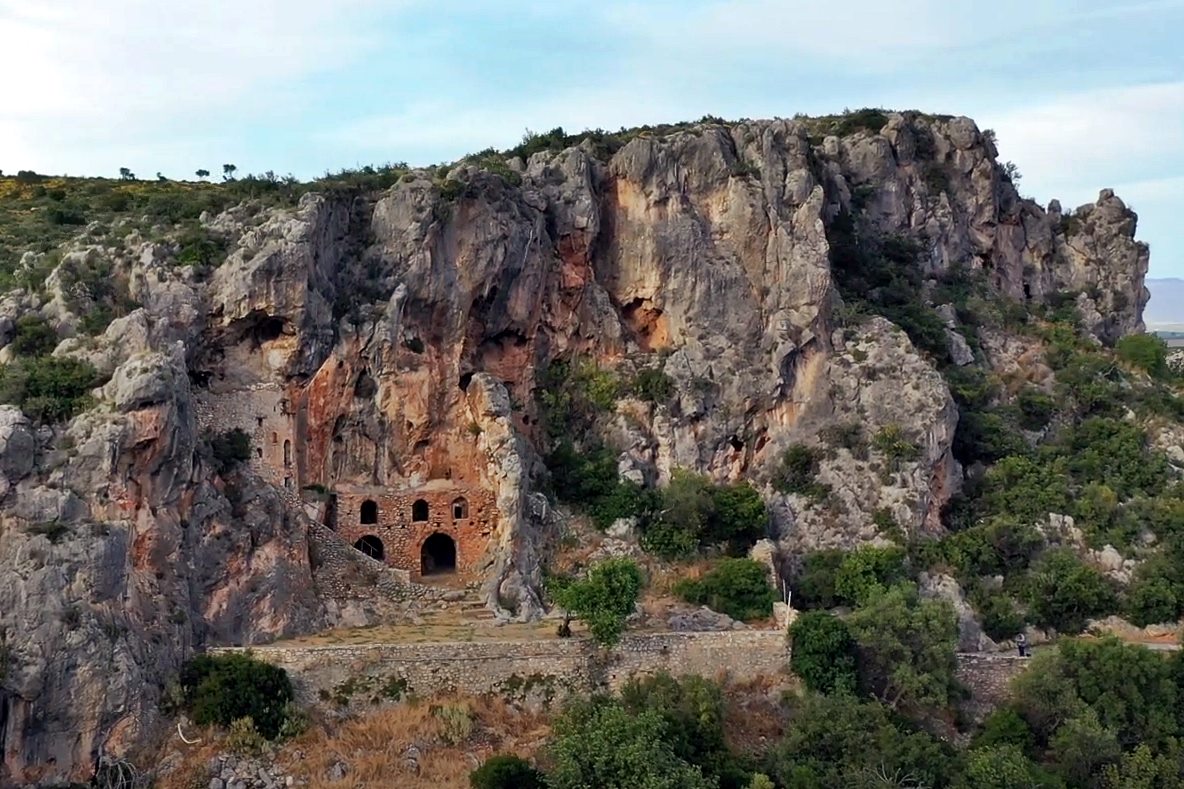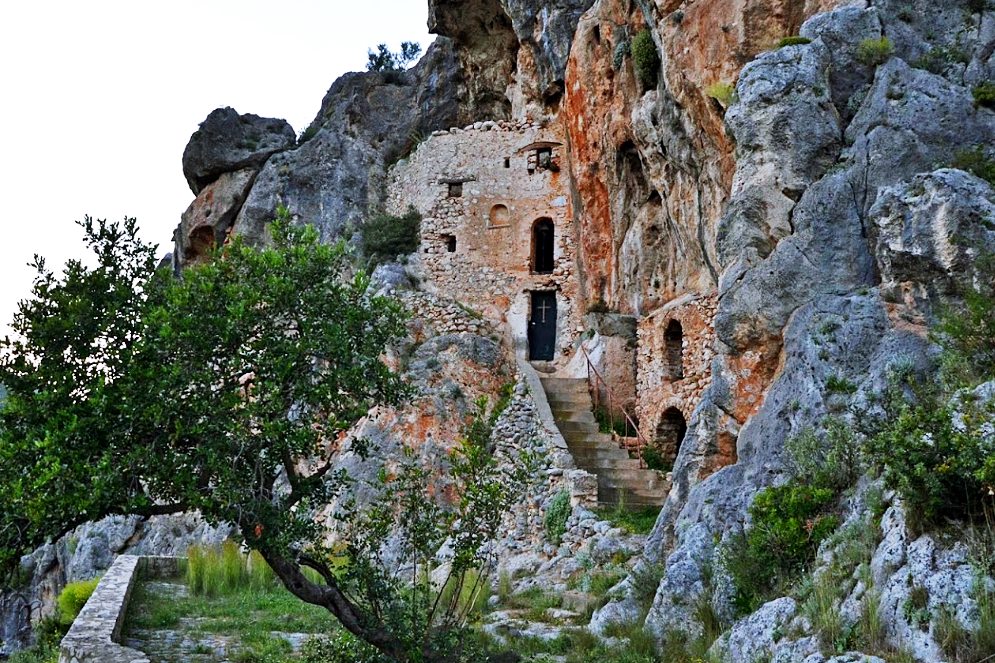Vrondamas, Evrotas, Laconia,Peloponnese
Old monastery of Vrondamas
| Location: |
| In a cave at the western bank of Evrotas, 5km south of the village Vrondamas in Laconia |
| Region > Prefecture: | 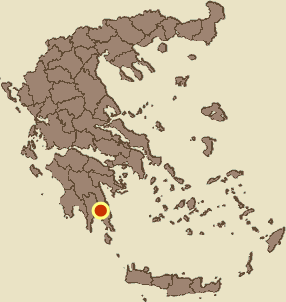 |
| Peloponnese Laconia | |
| Municipality > Town: | |
| City of Evrotas • Vrondamas | |
| Altitude: | |
| Elevation ≈ 145 m |
| Time of Construction | Origin | |
| 12th century | BYZANTINE |
|
| Castle Type | Condition | |
| Cave Fort |
Average
|
Abandoned old monastery, which must have been originally a simple hermitage, in a cave in a steep ravine above the riverbed of Evrotas, 5km. south of the village of Vrondamas in Laconia.
The place is well hidden and with natural protection, while the construction has a strong fortress character. It can therefore be considered a castle monastery.
History
The walls inside the cave are decorated with 80 images that date back –roughly– to 4 different periods. The first phase of the frescoes is from the 12th century and the newest from the 16th. It is therefore concluded that the monastery existed from the 12th century.
Nothing more specific is known from the Byzantine history of the monastery. There are various other similar hermitages in the wider area, such as Mariorema and others (not all of which can be considered castle monasteries). According to the local tradition these monasteries were known as the “hermitages of Agios Nikon”.
Osios Nikon was a 10th century Byzantine monk who dedicated 30 years of his life to missionary activity in the region of Sparta. It is indeed very possible that the hermitage in question already existed in an early form from the end of the 10th century.
In 1825, during the Greek war of Independence, the population of Vrondamas sought refuge in the monastery where they were besieged by the forces of Ibrahim pasha. The Turks set fire and threw burning branches inside the cave. As a result, 400 people died that day of asphyxiation.
Structure, Fortification & Buildings
The access to the cave is made by a stone staircase that seems to have been repaired relatively recently.
At the base of the stairs there are characteristic ruins of a two-storey building with arched openings and a vaulted roof. These were the cells of the monks. Under the floor of the cells there is a cistern that collected rainwater. Higher up, in another niche of the rock, four half-ruined kilns are preserved, to which a narrow path leads.
The cave with the temple is oriented to the southeast. In addition to the strong outer wall of the cave there is inside a parallel wall that occupies the entire height and width of the cave. This creates a vestibule inside the temple. An arched corridor leads to the vestibule from the entrance.
The floor of the vestibule to the left of the corridor is at a higher level, forming the space of another underground tank.
This arrangement with the two parallel walls seems to have been the first phase of construction.
The second wall (the inner one) is located at a distance of 4.80m from the entrance and has three openings-doors. There is also a fourth opening that is blind, like a niche.
Two of the three doors of the inner wall lead to two dark (of course) vaulted, successive spaces. The first is the narthex and the second the main temple. The narthex is elongated (4.65m long, 2m wide) and parallel to the also elongated (3.60m long) main church. In the narthex there is a door that leads to the depths of the cave. The narthex is separated from the main temple by another wall (with two openings) which is lower and later than the original two walls. Inside the temple there are traces of a wooden iconostasis.
The third opening of the inner wall leads to a tiny funerary chapel (where a tomb was found and searched). This chapel is about 3 centuries younger than the rest of the church.
All the aforementioned walls are covered by frescoes that have been preserved in relatively good condition and, as we have said, the oldest are from the 12th century.
The maximum width of the cave is 9 meters, shortly after the entrance. The depth of the space used was about 10 meters.
| First entry in Kastrologos: | November 2021 |
Sources
- Ν.Β. Δρανδάκης, ΤΟ ΠΑΛΙΟΜΟΝΑΣΤΗΡΟ TOY ΒΡΟΝΤΑΜΑ, Αρχαιολογικόν Δελτίον, τεύχος 43, Μέρος Β’ Μελέται, 1988 σελ. 159-194
- Video by the user Panagiotis Poulakos Photography Παλαιομονάστηρο Βρονταμά: Το Μοναστήρι της αετοφωλιάς από ψηλά.
|
|
| Access |
|---|
| Approach to the monument: |
| There is a dirt road to the moanstery from Vrondamas (in rather good condition). The last 200m, on foot. |
| Entrance: |
| Entrance with permission from the key keepers in Vrondamas |
| Similar |
|---|
| Old monastery of Philosophos |
| Monastery of Osios Leontios |
| Castle of Lykouria |
| Hermitage of Mariorema |
| Cave fort of Priolithos |
| Cave-fort of Sassalotrypa |



